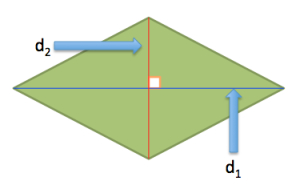Derivation of the Area of a Rhombus
A rhombus is a parallelogram whose sides are congruent. The diagonals of rhombus are perpendicular to each other. They also bisect each other. In this post, we are going to find the general formula for finding the area of a rhombus using these properties. We are going to learn two methods.
Method 1
Consider the rhombus below.
We can divide it into two congruent triangles using diagonal . Since the diagonals of a rhombus are perpendicular to each other, we can use
as base and one half of
as the height of the upper triangle (Why?). If we let
be the area of the upper triangle, then, calculating its area, we have » Read more
